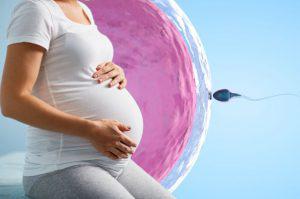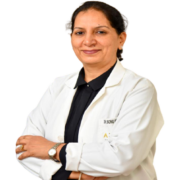In-vitro fertilization (IVF)
is a process by which an egg is fertilized by sperm outside the body.
The process involves monitoring a woman’s ovulatory process, removing ovum or ova (egg or eggs) from the woman’s ovaries and letting sperm fertilize them in a fluid medium in a laboratory and then transferring it to the patient’s uterus with the intention of establishing a successful pregnancy.
The first successful birth of a “test-tube baby”, Louise Brown, occurred in 1978. Louise Brown was born as a result of natural cycle IVF. Robert G. Edwards, the physiologist who developed the treatment, was awarded the Nobel Prize in Physiology or Medicine in 2010.
Why IVF Is Needed?
In vitro fertilization (IVF) is one of several techniques available to help couples with fertility problems to have a baby.
Those Fertility Problems Include:
1) Endometriosis
2) Low sperm counts
3) Problems with the uterus or fallopian tubes
4) Problems with ovulation
5) Antibody problems that harm sperm or eggs
6) The inability of sperm to penetrate or survive in the cervical mucus
7) An unexplained fertility problem
Who Can Have IVF?
Women under 40 years should be offered three cycles of IVF treatment on the NHS if :
1) you have been trying to get pregnant through regular unprotected intercourse for two years 2) you have been trying to get pregnant through regular unprotected intercourse for a total of two years 3) you have not been able to get pregnant after 12 cycles of artificial insemination 4) you have never had IVF treatment before 5) you show no evidence of low ovarian reserve (this is when eggs in the ovary are impaired or low in number)
How IVF is performed
Step one:
Suppressing the natural monthly cycle:
You are given a drug that will suppress your natural menstrual cycle. This is given either as a daily injection (which you’ll be taught to give yourself) or as a nasal spray. You continue this for about two weeks.
Step two:
Boosting the egg supply
Once your natural cycle is suppressed, you take a fertility hormone called FSH (follicle-stimulating hormone). These fertility hormones are known as Gonadotrophins. This is another daily injection that you give yourself, usually for about 12 days, but it can vary depending on your response.
Step three:
Checking on progress
The clinic will keep an eye on you throughout the drug treatment. You will have vaginal ultrasound scans to monitor your ovaries and, in some cases, blood tests. About 34-36 hours before your eggs are due to be collected, you’ll have a final hormone injection that helps your eggs to mature.
Step four:
Collecting the eggs
For the egg collection, you’ll be sedated and your eggs will be collected under ultrasound guidance. This involves a needle being inserted through the vagina and into each ovary. The eggs are then collected through the needle.
Step five:
Fertilizing the eggs
The eggs that have been collected are mixed with your partner’s or the donor’s sperm in the laboratory. After 16-20 hours they’re checked to see if any have been fertilized.
The cells that have been fertilized (embryos) continue to grow in the laboratory for one to five days before being transferred into the womb. The best one or two embryos will be chosen for transfer.
After egg collection, you will be given medicines, either progesterone or hCG (chorionic gonadotrophin), to help prepare the lining of the womb to receive the embryo. This is given either as a pessary (which is placed inside the vagina) or an injection
Step six:
Embryo transfer
Women under 37 in their first IVF cycle should only have a single embryo transfer. In their second IVF cycle, they should have a single embryo transfer if one or more top-quality embryos are available. In the third IVF cycle, no more than two embryos should be transferred.
Women aged 37–39 years in the first and second full IVF cycles should also have single embryo transfer no more than two embryos should be transferred.
For women aged 40-42 years, double embryo transfer can be considered.
All multiple embryo replacements carry the risk of multiple pregnancy and birth.








